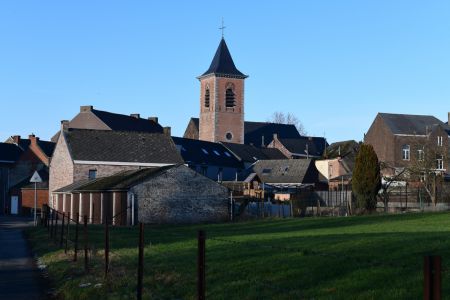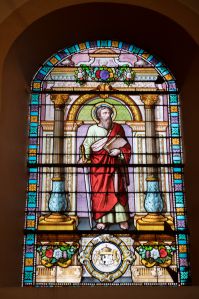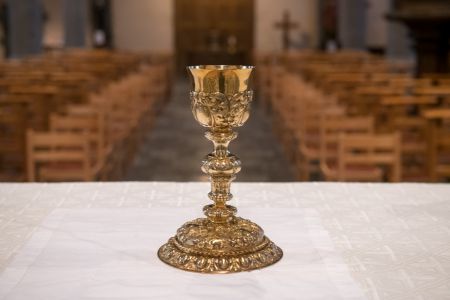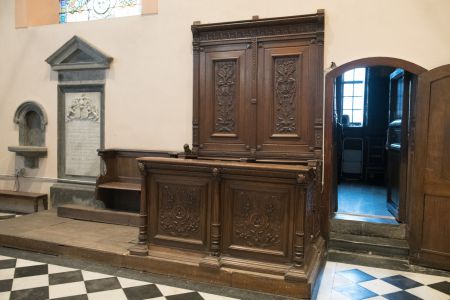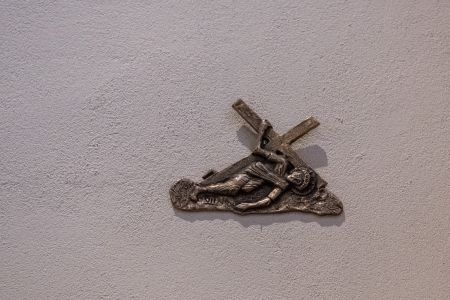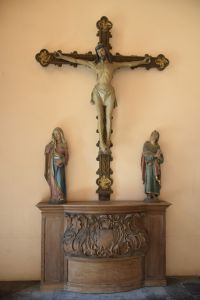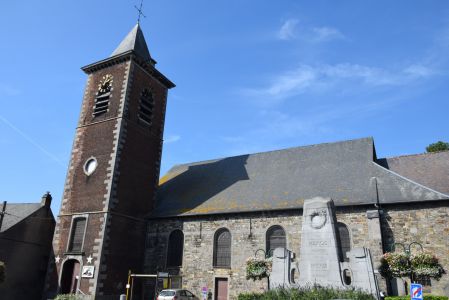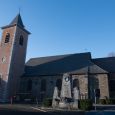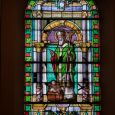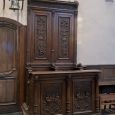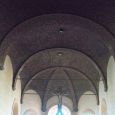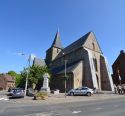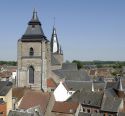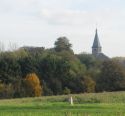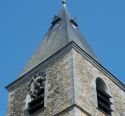Church | 1777 | Classical | Catholic Church

Map
Opening hours
01 January - 31 December
Mon 14.00 - 17.00
Tue -
Wed 9.00 - 10.00
Thu -
Fri 14.00 - 17.00
Sat 9.00 - 17.00
Sun 9.00 - 17.00
Religious offices
Sunday 10.45 am
Description
This charming church built mainly with the famous Hainaut blue stone from a local quarry is placed in the heart of the village. It’s of classical style and built in 1777. It has a high brick tower and funerary slabs on its outside walls.
Inside, the choir is noteworthy especially the central stained glass window depicting the Last Supper and the stalls (1884) with arms in the form of lions. New since 2012 is the Way of the Cross in bare bronze which invites meditation.
Leaflet: L'église Saint-Nicolas de Neufvilles (FR)
KIKIRPA : Photo-library online
Photos
Remarkable elements
The Church
Planted on the village square, the parish church is a classic building made of bricks and rubble. On the lowered arch of the tower door, the year 1776, the date of its construction, appears. The walls of the collateral, the base of the choir and the tower were built with reuse rubble. If the high bell tower is made of bricks, the beautiful blue stone appears in strength and style, especially in harp corner chaining.
About ten slabs and funeral stelae are attached to the exterior walls. The tall off-center tower takes up the attention. The last of the three floors, under stone modillions, has four faces pierced with sound shades.
The triumphal cross
Founded on a wooden pedestal is the triumphal cross dated around 1530. It is an important work of art of the church. It is decorated with the four evangelical symbols at the small four-lobed wooden ends: the eagle of John, the angel of Matthew, the lion of Mark and the bull of Luke. Christ carries long hair and spreads out his arms horizontally. A few drops of blood splash his face. The Blessed Virgin and St. John wear a draped classical robe and have a posture typical of 15th century scenes. Our Lady dries her tears with her recher hand. Jan turns towards the Saviour with a look full of tender sadness.
Fonts and Christ
Close to the hexagonal baptismal font tank, from the early 16th century, Christ seated at Calvary would have been from the same period. It is made of polychrome stone. Painful, crowned with thorns, his forehead is wrinkled, his mouth pinched, his cheeks hollowed out and he looks in front of him. The joined wrists are linked by a rope.
Stained glass windows
Most of the stained glass windows are decorated with very colourful figures of saints. In addition to a Saint Eloi, a Virgin with a fleur-de-lisé cloak, a last supper in the choir, we identify Saint Nicholas, patron saint of the parish. At the feet of the majestic bishop, a tank protects the three children he saved.
Stalls
The stalls date from 1884. Lions decorate the armrests. On the face of the two God-prayers, angels of both sexes (!) carry a mandorla with a capital A written in the centre, reminiscent of "I am the Alpha and the Omega..."
The vault
The church has five bays, separated by stone pillars of Tuscan style. Their dimension is remarkable. The vault, with naked bricks (1960) has the shape of a veil. It promotes the serious solemn impression that is characteristic of the whole interior.


